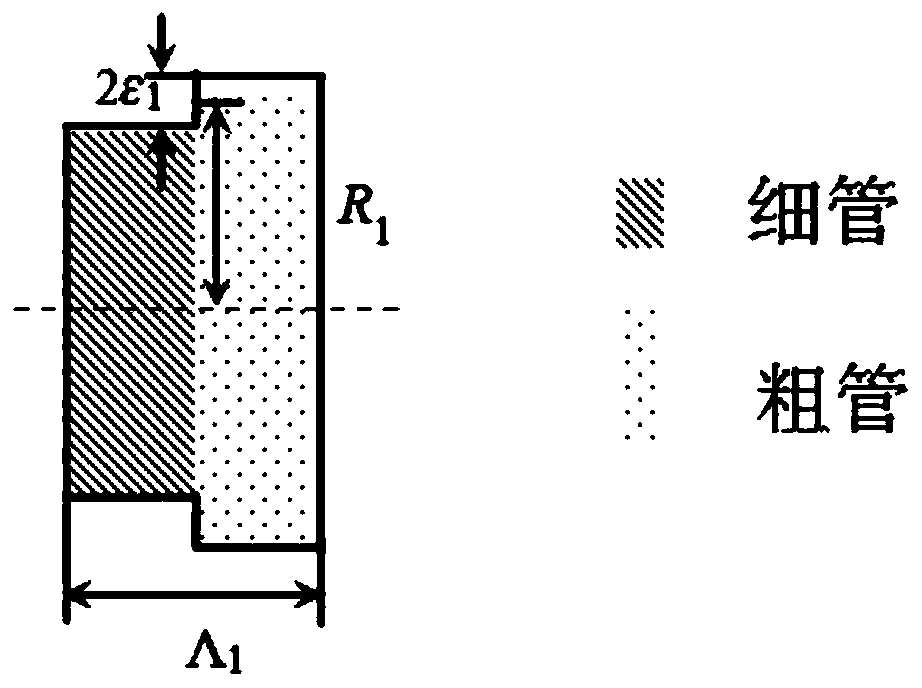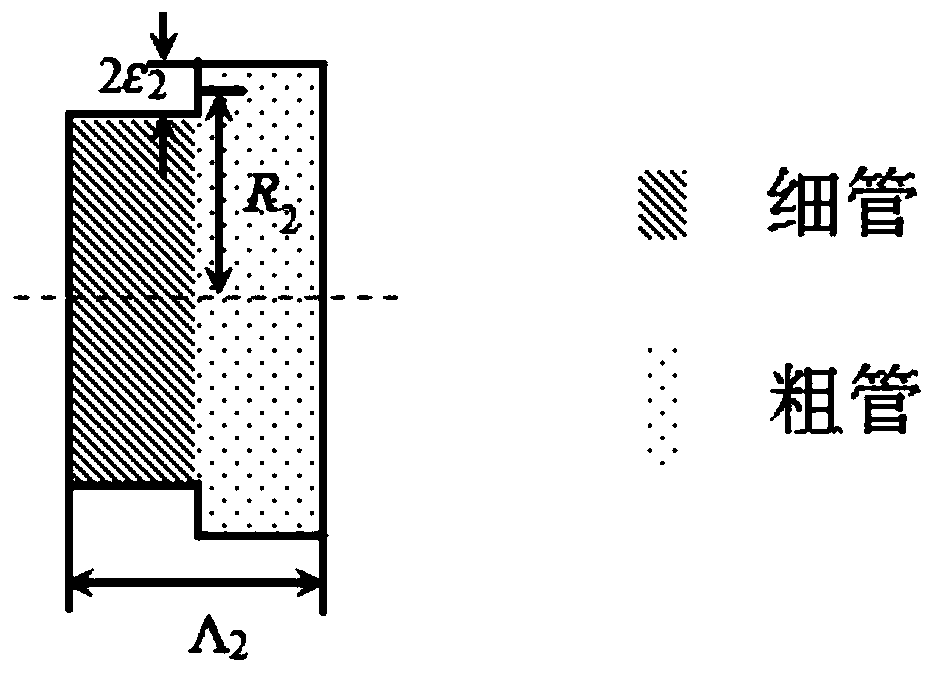A waveguide high-order mode converter
A high-order mode, converter technology, applied in instruments, sound-producing instruments, etc., can solve problems such as cell damage, and achieve the effects of easy acquisition, easy preparation, and simple structure
- Summary
- Abstract
- Description
- Claims
- Application Information
AI Technical Summary
Problems solved by technology
Method used
Image
Examples
Embodiment Construction
[0023] The specific implementation cases of the present invention will be described in detail below according to the accompanying drawings.
[0024] figure 1 Assembly drawing (solidworks drawing) for the waveguide. The fundamental mode is incident from the Bragg waveguide, producing a radially distributed higher-order mode field during the first non-Bragg waveguide period. Both the Bragg waveguide (A) and the non-Bragg waveguide (B) have five periods, and the two are connected by a flange ring (C). Arrows indicate the direction of sound wave incidence.
[0025] A is a Bragg waveguide
[0026] B is a non-Bragg waveguide
[0027] C is flange ring
[0028] figure 2 is a schematic diagram of the periodic unit of the Bragg waveguide;
[0029] Λ1 is the period length of the Bragg waveguide
[0030] R1 is the average inner diameter of the Bragg waveguide
[0031] ε is the periodic fluctuation parameter, take ε=0.1R
[0032] image 3 is a schematic diagram of a non-Bragg w...
PUM
 Login to View More
Login to View More Abstract
Description
Claims
Application Information
 Login to View More
Login to View More - R&D
- Intellectual Property
- Life Sciences
- Materials
- Tech Scout
- Unparalleled Data Quality
- Higher Quality Content
- 60% Fewer Hallucinations
Browse by: Latest US Patents, China's latest patents, Technical Efficacy Thesaurus, Application Domain, Technology Topic, Popular Technical Reports.
© 2025 PatSnap. All rights reserved.Legal|Privacy policy|Modern Slavery Act Transparency Statement|Sitemap|About US| Contact US: help@patsnap.com



